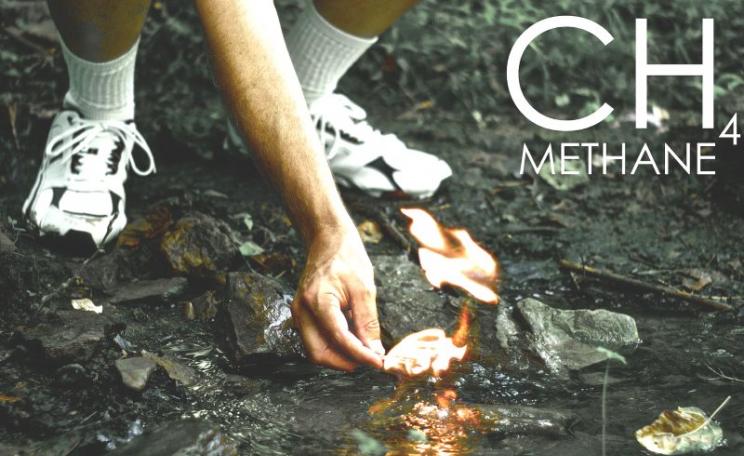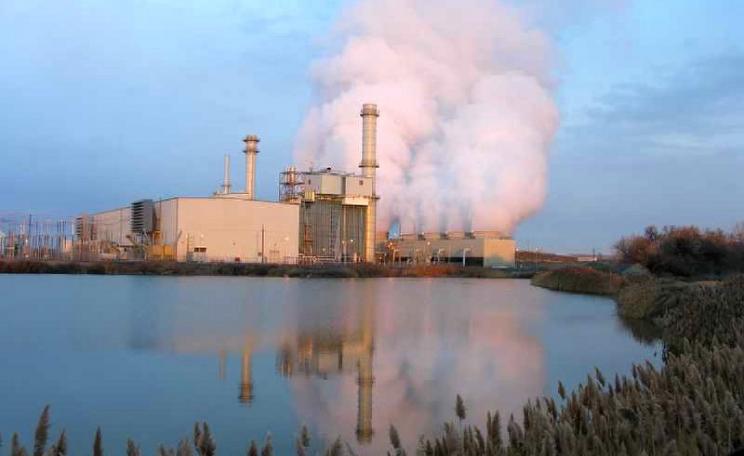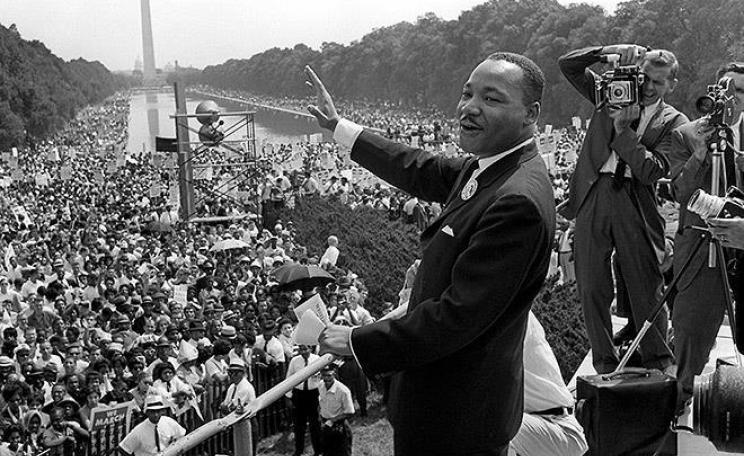Once you get to the 1980s, it's like 'bam!' The map turns bright yellow and red. It was in that moment that I actually think that all of us crossed over to the side that there is a discernible human influence on climate.
Professor Michael Mann is, through the sceptic looking glass, an accomplished dissembler, a manipulator of science, a fraud, and a threat to the American people.
He is reviled, attacked and harassed. A former CIA agent has contacted his colleagues looking for dirt. The hacker who broke into the University of East Anglia servers during Climategate was searching for his data and emails, among other things.
The hockey stick graph, which Mann helped create and showed that the rapid rise in global temperatures over the last decades has been unprecedented in human history, has become the totem the sceptics are most desperate to tear down.
If Mann is any of these things, then he is the most convincing con artist the world has ever seen, because to the outside world he is living the American dream.
A distinguished professor and director of the Earth System Science Center at Pennsylvania State University, Mann is married to Lorraine, a cell biologist also working at the university. The two met at an event in an amphitheatre in Charlottesville in Virginia and married the following year, in the summer of 2003 on Long Island Harbour, New York.
They live with their daughter in a 3,300-square-feet, three-bedroom detached house in Pennsylvania, which they bought with a mortgage for $600,000 in 2005. Mann now earns $150,000 a year through his professorship, as well as around $30,000 from talks and events.
He follows American Football and each year watches the UC Berkeley College game against rivals Stanford who, he tells me, "often pummels us". Mann will tell you everything about his life, his work and his finances if you ask him politely.
He has even, over the years, come to enjoy the media spotlight. "My daughter thinks it's pretty cool that Daddy is often on TV. She knows that it's a little different from her friends", he beams. "But I've been able to shield them, her especially, from the nonsense and the uglier episodes."
Steeped in middle class, bipartisan American values
Mann is like millions of middle class Americans in that his family fled destitution and persecution, but were able to prosper through hard work and strong ethics in the Land of the Free.
His father's grandfather was a newspaper merchant who fled Ukraine during increasingly deadly pogroms, while his mother's family were forced to flee their home on the Polish border with Imperial Russia because of the tide of violent anti-semitism.
His great-grandfather came through Ellis Island and, once in America, won a scholarship to study medicine at the University of Pennsylvania, after which he became a doctor.
Mann's father became a maths professor, while his mother grew up in a small town in Katanning, outside Pittsburgh, and moved to Pennsylvania to gain a degree in education.
Once you get to the 1980s, it's like 'bam!' The map turns bright yellow and red. It was in that moment that I actually think that all of us crossed over to the side that there is a discernible human influence on climate.
The family history is steeped in the values of education and hard work. Mann was raised in the college town of Ambrose, Massachusetts, a "progressive enclave". As a child, he was given freedom to follow his own interests but was never allowed to wander too far from the path of knowledge.
One of Mann's earliest memories is escaping the family home in his nappy in search of cookies and calling in at the neighbours' house. The neighbours were James and Edna Anderson, retired Republicans and staunch Christians.
Mr Anderson was a pomologist, an apple expert, at the University of Massachusetts, and he railed against environmentalists who criticised the new Alar insecticide, believing the chemical was providing food for the poor.
The elderly neighbours "adopted" the young tearaway and taught him the Ten Commandments. Perhaps because they were Christian and Republican, while Mann's family were Jewish and Democrats, the core values seemed to the young boy to contain some universal truths.
"I had a sort of bipartisan upbringing", he recalls fondly. "That's where I acquired some of my ethical foundations, as much from their influence as from my parents' influence. From an early age I grew up with a belief that it's important to do good with your life. It is important to try and make the world a better place."
Schoolwork and education were always highly valued: "In elementary school I was sort of, liked to goof off a bit." During junior high, Mann scored a B in maths for one quarter and was immediately taken to one side by his father for a stern word:
"I remember there being some discussion about what happened. There was a little bit of incentive provided. Maybe a down payment towards a new bike. I ended up getting an A+ the next quarter."
As fellow graduates went to Wall Street, Mann stuck with science
While still a high school senior at Amherst High School, Mann competed in a computer programming contest at Western New England University College - and still takes considerable pride at having won the prize.
"What I was really driven by, what the reward really about, was in solving an important problem, solving a difficult problem, and I suppose at some level, there is some, you know, recognition for that: That provides an additional incentive. It's fun to be recognised by your fellow computer nerds."
He adds: "What means a lot to me is the recognition I've received from my colleagues, awards from my fellow scientists. I can be smeared by charlatans and it sort of washes over me because what really matters to me is how I'm viewed and how my work is viewed by my colleagues."
If Mann is really trying to fool the world into wasting billions during a recession to pump his research grants then he is seriously jeopardising the love and admiration of his entire family, his wife, and his closest friends.
He graduated from UC Berkeley and in the autumn of 1989 went to Yale University where he focused on theoretical physics; however, he found himself losing interest with the specific project he was funded to work on.
"I talk about the random path, the random walk - a term that has meaning both in science and in life. It was this random walk and I sort of walked into a bit of a dead end ... I just had to back up a little bit and find my way out of it, back into the main part of the maze."
Many of his university friends were also leaving university to enter Wall Street, where their maths and physics knowledge could be used to create complex derivatives and other financial instruments that would fool American investors, and ultimately the state, out of billions of dollars.
"Anybody with any sort of advanced training in maths and physics could immediately find a job working for an investment firm doing derivatives modelling and some people in my cohort of physics graduate students at Yale at the time did leave for Wall Street to do just that - and made a lot of money doing it."
But Mann's concern was to solve 'big picture' problems
The government had just scrapped the super collider project in Texas. Funding for Mann's specific area of science was significantly reduced. But Mann was not interested in earning millions:
"I was interested in bigger picture problems, solving big picture problems, you know, like the wide-open existential problems of cosmology, e.g. the grand unified theory of physics. I wanted to work on really interesting big picture problems."
He thumbed the Yale University prospectus and decided to change course; in doing so, he changed the course of his life. He began his PhD at the Department of Geology and Geophysics at Yale University under the supervision of Professor Barry Saltzman.
He remembers Saltzman as an "old fashioned scientist" who remained deeply sceptical about the latest claims being made by climate scientists that the atmosphere had begun warming and the future was bleak.
Mann himself was weary of the news reports and some of the peer-reviewed literature at this time: "You know, when I came into this field in the early 90s, the Intergovernmental Panel on Climate Change (IPCC) had not concluded that there was a discernible human influence on the climate. There was still a scientific debate about that.
"There was not a legitimate scientific debate about whether greenhouse gases would in warm the climate. That was established more than a century ago. But there was still some debate about the level of natural variability and the extent to which that greenhouse warming signal had emerged from the background of natural variability."
As a physicist Mann even received fossil fuel funding
The scientist certainly did not consider himself any kind of political radical or environmentalist. "I had the mindset of a physicist. I understand where some physicist climate change deniers are coming from."
He added: "I still remember being sceptical about pretty much all claims. There's a tendency for the physicist to think that they understand a problem at a level that experts in other fields can't. I understand and appreciate where that comes from - because I was there."
Mann was interested in Saltzman's work with climate models: "But it wasn't because, 'hey, I'm an environmentalist and I want to save the world'. It was more: 'hey, this problem is interesting and it also really matters'."
As a graduate student, Mann was partly funded by the Electric Power Research Institute (EPRI) which is funded by the electric power industry - fossil fuel interests: "I was once supported by the fossil fuel industry in a very real sense. And my guess is that they funded Barry in part because he was a sceptic - but he was sceptic in the honest sense."
Mann's PhD examined the natural variation in climate to establish whether this might be at least a partial cause of recent global warming: "So I went into climate research more from the standpoint of somebody who was more on the sceptical side. Some of my early work was actually celebrated by climate change deniers."
But then something changed his mind.
Mann started doing research with Saltzman and another of the professor's former students. This was Robert Oglesby, a postdoctoral researcher who is now with the University of Nebraska working on general circulation modelling (GCM).
Worldwide temperature changes on full-colour maps
The scientists had privileged access to the very latest technology-including modelling software and even a colour printer.
"This was in the early days of computer printers. So to get a colour printout you had to get special paper, and you would go up to the third floor to the special colour printer, so there was a certain drama. Until you printed it out in colour on paper you couldn't really appreciate the results."
They printed out world maps which had been colour-coded to show the rise in temperatures for each of the decades, moving through light yellows for little change to reds for the occasional spot where there had been a significant rise.
These maps are now ubiquitous in climate research and reporting, but this was the first time Mann had produced or even seen one like this: "We were just looking decade by decade where there's been maps of temperatures: 1900, 1910s, 20s, 30s, all the way to the 70s. And if you compare the 70s map to the 1900s map, there isn't much of a difference.
"But once you get to the 1980s, it's like 'bam!' The map turns bright yellow and red. It was in that moment that I actually think that all of us, including Barry I think, crossed over into weighing more on the side that there is a discernible human influence on climate. This is before the IPCC reached that conclusion in 1995 with the publication of the second assessment report."
What matters is the science
In a single moment, Mann abandoned his scepticism about the reality of human-caused climate change. As it happens, he would dedicate the rest of his working life to understanding the true scientific meaning and implications of those red smudges on an early colour printout.
There were three scientists in the room that day. No politicians, no ideologues, no closet Communists tampering with the ink cartridges.
Mann points out: "The important thing to understand there is that our views on this issue were led by the science we were doing, which is the way it should be. The science that we were doing was not influenced by our views on the climate change issue."
The colour maps formed part of Mann's first climate change publication, with colleagues, in a peer-reviewed paper. He then set about trying to place modern climate change in a larger context.
What he found, and what he wrote, would throw him headfirst into a sometimes vicious and soul-destroying battle with the climate sceptics who had previously celebrated his work.
Brendan Montague is editor of DeSmog UK.
This article joins together Part One and Part Two of the original interview as originally published on DeSmog UK.







